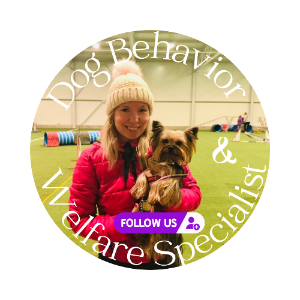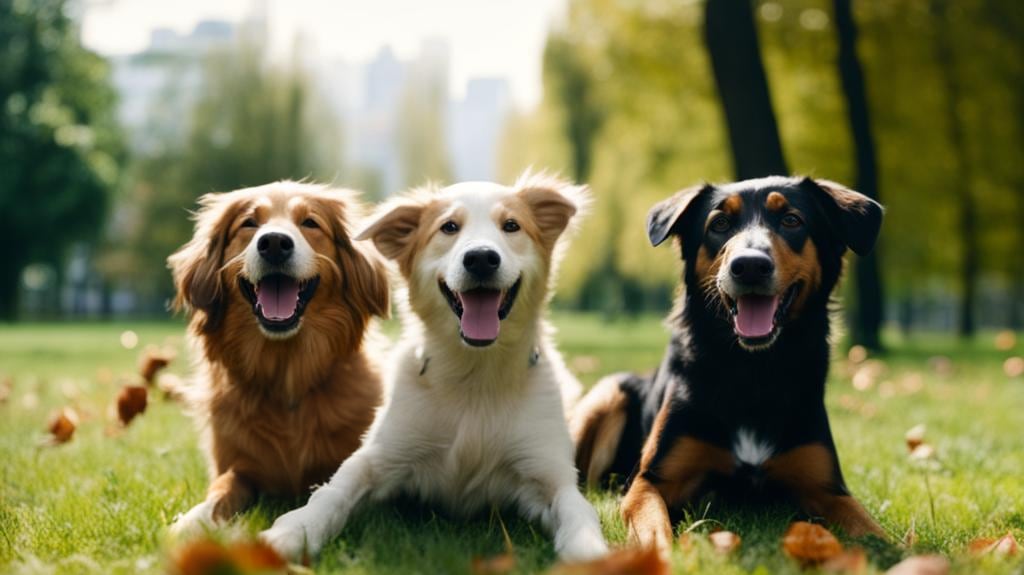If you are a dog owner, you probably want your furry friend to have a good quality of life. But how do you know if your dog is happy and healthy?
One way to assess your dog’s welfare is to use the 5 Freedoms framework, which is a set of internationally accepted standards of care that affirm every living being’s right to humane treatment.

- Contents:
- What Are The 5 Freedoms For Dogs
- Freedom From Hunger And Thirst
- Freedom From Discomfort
- Freedom From Pain, Injury, or Disease
- Freedom To Express Normal Behavior
- Freedom From Fear And Distress
- Conclusion
What Are The 5 Freedoms For Dogs
The 5 Freedoms were developed by Britain’s Farm Animal Welfare Council in 1965 and adapted by the Association of Shelter Veterinarians for companion animals in shelters. They are:
- Freedom from hunger and thirst: by ready access to fresh water and a diet to maintain health and vigor.
- Freedom from discomfort: by providing an appropriate environment including shelter and a comfortable resting area.
- Freedom from pain, injury, or disease: by prevention through rapid diagnosis and treatment.
- Freedom to express normal behavior: by providing sufficient space, proper facilities, and company of the animal’s own kind.
- Freedom from fear and distress: by ensuring conditions and treatment which avoid mental suffering.
These 5 Freedoms ensure that we meet the mental and physical needs of our dogs in our care and provide them with a positive experience. In this blog post, we will explain each freedom in more detail and give some interesting examples of how to apply them to your dog’s daily life.
Freedom From Hunger And Thirst
This freedom means that your dog should always have access to clean water and a balanced diet that suits their age, breed, and health condition. For example, puppies, adult dogs, pregnant dogs, and senior dogs all need different types of food provided on different schedules.
You should also avoid giving your dog human food that can be harmful to them, such as chocolate, grapes, onions, garlic, and xylitol.
Some signs that your dog is not getting enough food or water are:
- Weight loss or gain
- Dull coat or skin problems
- Lethargy or weakness
- Dehydration or excessive thirst
- Dental issues or bad breath
If you notice any of these signs, you should consult your veterinarian and adjust your dog’s feeding and watering accordingly.

Freedom From Discomfort
This freedom means that your dog should have a comfortable and safe environment that protects them from extreme weather, noise, and other stressors. You should provide your dog with soft bedding and an area with appropriate temperature, noise levels, and access to natural light.
If your dog is outside, they should have shelter from the elements as well as appropriate food and water bowls that will not freeze or tip over.
Some signs that your dog is uncomfortable are:
- Shivering or panting
- Scratching or licking
- Hiding or trembling
- Whining or barking
- Aggression or anxiety
If you notice any of these signs, you should check your dog’s environment and make sure they have everything they need to feel comfortable and secure.
Freedom From Pain, Injury, or Disease
This freedom means that your dog should be protected from any physical harm or illness that can cause them pain or suffering. You should vaccinate your dog, monitor their health, treat any injuries, and provide appropriate medications.
You should also spay or neuter your dog to prevent unwanted pregnancies and reduce the risk of certain diseases. You should also groom your dog regularly to keep their coat and nails healthy and prevent parasites and infections.
Some signs that your dog is in pain, injured, or sick are:
- Changes in appetite or drinking
- Changes in behavior or mood
- Changes in activity or mobility
- Changes in urination or defecation
- Changes in appearance or posture
If you notice any of these signs, you should take your dog to the veterinarian and follow their advice on how to treat your dog’s condition.

Freedom To Express Normal Behavior
This freedom means that your dog should be able to act like a dog and do the things that make them happy and fulfilled. You should provide your dog with enough space, toys, and enrichment to allow them to run, jump, play, chew, dig, and explore.
You should also socialize your dog with other dogs and people to help them develop their social skills and prevent behavioral problems. You should also train your dog using positive reinforcement methods to teach them basic commands and manners.
Some signs that your dog is not able to express normal behavior are:
- Boredom or frustration
- Destructiveness or escape attempts
- Stereotypies or compulsive behaviors
- Aggression or isolation
If you notice any of these signs, you should provide your dog with more stimulation, exercise, and interaction to help them express their natural instincts and preferences.
Freedom From Fear And Distress
This freedom means that your dog should be free from any emotional or mental stress that can affect their well-being. You should provide your dog with a stable and predictable routine, a secure and loving bond, and a positive and supportive environment.
You should also avoid exposing your dog to any situations that can cause them fear, anxiety, or distress, such as loud noises, unfamiliar people or animals, or separation.
Some signs that your dog is experiencing fear or distress are:
- Excessive vocalization or panting
- Dilated pupils or ears back
- Tail tucked or body low
- Avoidance or freezing
- Submissive or appeasing behaviors
If you notice any of these signs, you should try to identify and remove the source of stress, comfort and reassure your dog, and seek professional help if needed.
Conclusion
The 5 Freedoms framework for dogs is a useful tool to help us understand and improve our dog’s welfare. By following these principles, we can ensure that our dogs have a good quality of life and a positive relationship with us.
I hope this blog post has helped you learn more about the 5 Freedoms and how to apply them to your dog’s daily life. If you have any questions or comments, please feel free to contact us or leave a comment below. Thank you for reading!

Dog’s 5 Freedoms Framework: 1st FREEDOM FROM HUNGER & THIRST | Dog Nutrition Online Courses
Unlock the secrets to optimal dog nutrition now! Enroll in our exclusive online courses and provide your beloved canine companion with a happy, healthy, and long life.

